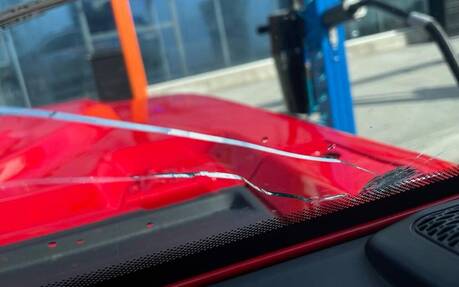Car Owners Report Issues With Repaired Driver Assistance Features
Advanced safety and driver assistance features are increasingly common in modern vehicles, which is both good news and bad news. While these technologies have been shown to help prevent accidents significantly, too many drivers are putting too much trust in them, while others find them too annoying and opt to turn them off whenever possible.
What’s more, electronic driving aids don’t always work properly, for example due to a software bug or the elements messing with the cameras and sensors. Also compromising their effectiveness are repairs following an accident.
- Also: Ford’s BlueCruise Leads Best Driver Assistance Systems in 2023
- Also: Survey: Canadians Find Driver Assist Features Confusing, Annoying
In recent weeks, the U.S. Insurance Institute for Highway Safety (IIHS) surveyed more than 3,000 owners of cars equipped with front crash prevention, blind spot detection or rear-view or other visibility-enhancing cameras. Among those who reported that at least one of those systems had been repaired for any reason, about half said they had issues with the features after the job was completed.
“Many had issues with the technology afterward, and some said they had to have the same feature repaired more than once,” said IIHS Senior Research Scientist Alexandra Mueller, who designed the survey. “Still, the vast majority said they would buy a vehicle equipped with the technology again and most were satisfied with the out-of-pocket cost.”

According to the IIHS, automatic emergency braking can slash police-reported rear-end collisions by 50 percent, for instance. But vehicle repairs can make it necessary to calibrate the cameras and sensors that these systems rely on to ensure they work properly.
A simple windshield replacement is not normally super-expensive, but when repair shops also have to recalibrate said components (they’re typically located near the top middle section of the windshield), the operation can easily cost over $1,000 and lead to an insurance claim if it’s not covered by the manufacturer’s limited vehicle warranty.
You would think that car dealers and specialized shops have the tools and expertise to properly repair and recalibrate the cameras and sensors, but the IIHS survey shows it’s not always the case.
“Calibration software is subject to frequent updates, making it difficult for shops to keep their tools up to date. This is further complicated by a lack of standardization of calibration processes,” the IIHS notes. “Manufacturers should work to simplify and standardize the calibration procedure and ensure that repair shops have adequate information about how to restore full functionality to affected features.”
